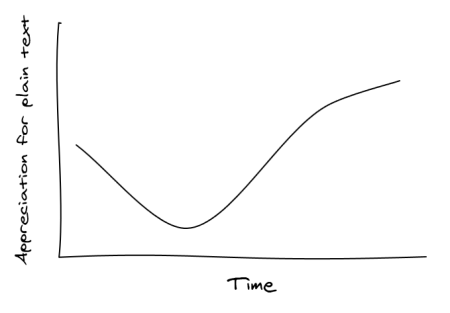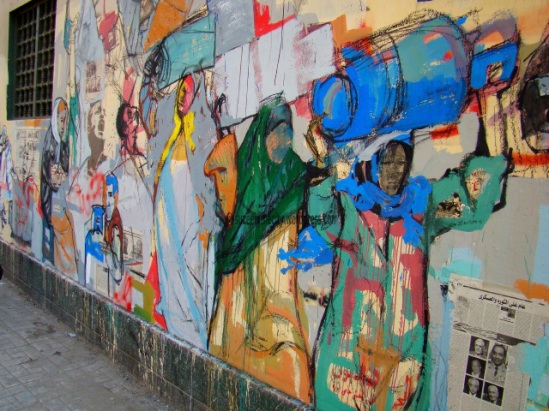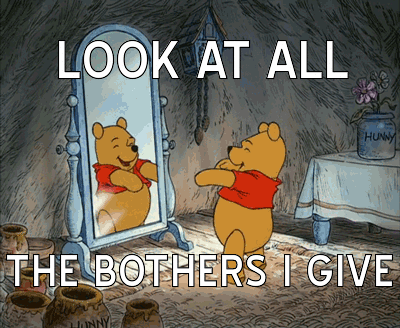 It can be pretty challenging to shop for beef if you don't know the difference between a shoulder blade steak and a center ranch steak. The difference in cost, size, and preferred cooking method can throw off even the best home cook. Thankfully this handy chart makes sure you're always prepared when buying and cooking beef. More »
It can be pretty challenging to shop for beef if you don't know the difference between a shoulder blade steak and a center ranch steak. The difference in cost, size, and preferred cooking method can throw off even the best home cook. Thankfully this handy chart makes sure you're always prepared when buying and cooking beef. More » Shared posts
This Guide to Cuts of Beef Makes Sure You’re Never Confused at the Meat Counter Again
 It can be pretty challenging to shop for beef if you don't know the difference between a shoulder blade steak and a center ranch steak. The difference in cost, size, and preferred cooking method can throw off even the best home cook. Thankfully this handy chart makes sure you're always prepared when buying and cooking beef. More »
It can be pretty challenging to shop for beef if you don't know the difference between a shoulder blade steak and a center ranch steak. The difference in cost, size, and preferred cooking method can throw off even the best home cook. Thankfully this handy chart makes sure you're always prepared when buying and cooking beef. More » Kindleberry Pi the second
Did you get a nice shiny new Paperwhite Kindle to replace your old one? (I haven’t yet. I’m waiting until the inevitable moment when I drop my Kindle Touch and break the screen; I’m currently on my third.) If you did, you might be interested to learn that when you’re not using it to read books or jailbreaking it so you can change the wallpaper, you can use your Paperwhite as a wireless, ultra low-power display for your Raspberry Pi.
We featured the original Kindleberry Pi hack from Ponnuki back in September. That hack required cables, and only worked on the old Kindle 3 (the version with the keyboard), not any later versions – plus, it looked a bit odd because to keep the screen in landscape mode you had to turn the whole assembly on its side, so the keyboard was rotated by 90 degrees. The new Kindle 5 (the Paperwhite) has no keyboard, a faster refresh rate, and a backlight that can be turned on in dark conditions. So Max Ogden has polished Ponnuki’s original Kindleberry Pi idea, and produced a really tidy piece of kit: a Raspberry Pi with a Paperwhite display, a wireless keyboard and a tiny wireless router. He says:
The advantages of the Kindleberry are pretty desirable for me:
- Week-long battery life: the Pi and the Kindle both have low power ARM processors so you can use any USB charger to power them
- The Kindle screen is designed for use in direct sunlight
- The whole setup is small enough to carry around in a pouch inside my normal backpack along with my normal laptop. I work from coffee shops in Oakland and often move around by bicycle during the day — now I can work from almost anywhere and still be at least a little productive.
Here at the Foundation, we’re watching the development of e-ink products with great interest. At the moment it’s nigh-on impossible to buy an e-ink display as a consumer unless it comes bundled as part of an e-reader like a Kindle or a Nook; and that makes them very expensive. The technology has all kinds of potential for applications we want to see the Pi being used for: the low energy requirement makes an e-ink screen a perfect choice for places where you’re off the grid or reliant on solar power. We’re looking forward to seeing prices come down and displays becoming more easily available to consumers.
Obviously, you’re not going to be watching video on an e-ink display any time soon; the refresh rates just aren’t there yet, and if they ever do get there, it won’t be for many years. But for everything else, e-ink’s a great choice. Max says that the Paperwhite’s refresh rate added to the tiny lag that you get using a wireless keyboard means that he sees a ~200ms screen delay when using the Kindleberry Pi, but that this is barely noticeable when typing.
Max has made code and a list of required hardware available at his website.
BionicOpter dragonfly drone flutters about, blows minds
Festo isn't quite the household name that Boston Dynamics is. (And, really, we're not entirely sure Big Dog is a regular topic of conversation at dinner tables yet.) But, it certainly deserves just as much attention for the work they're doing with robotics. After crafting a machine last year that soared around like a herring gull, now the company has created BionicOpter. The 17.3-inch long dragonfly drone can flutter through the air in any direction, and even hover, just like its biological inspiration. Its four carbon fiber and foil wings beat up to 20 times per-second, propelling it through the air as if it were swimming rather than flying. Actually piloting the robo-bug is achieved through a smartphone app, but an on-board ARM-based microcontroller makes small adjustments to ensure stability during flight. There are a few important pieces of information we don't have just yet. For one, it's not clear how long the two-cell lithium ion battery will last, and pricing or availability are missing from the brochure (at the source link). Chances are though, you'll never be able to afford one any way. Thankfully you can at least see this marvel of engineering in action after the break.
Filed under: Robots
Via: Design Engineering, The Verge
Source: Festo 1 (PDF), 2
I took some quotations from people I like and illustrated them
Happy 70th, Eric Idle!
Eric Idle wurde gestern stolze 70 Jahre alt! Im Video oben erzählen die Pythons ein bisschen über Herrn Idle und er selbst erklärt, wie sein Philosophers Song zustande kam, inklusive meinem Lieblings-Bier-Witz – bis heute eine meiner allerliebsten Python-Nummern (neben dem Parrot-Sketch und der Argument-Klinik) und ich liebe diesen Text… Happy Birthday und Prost!
Immanuel Kant was a real pissant who was very rarely stable,
Heidegger, Heidegger was a boozy beggar who could think you under the table,
David Hume could out-consume Schopenhauer and Hegel,
And Wittgenstein was a beery swine who was just as schloshed as Schlegel.
There’s nothing Nietzsche couldn’t teach ya ’bout the turning of the wrist,
Socrates himself was permanently pissed…
Virtual Depression-Diagnosis with Kinect-Hack
Das Institute for Creative Technologies an der University of Southern California arbeitet an virtuellen Psychotherapeuten namens SimSensei, die Depressionen anhand von Körpersprache und Mimik diagnostizieren können – mittels einem gehackten Kinect. Ein bisschen wie ein invertierter Voight-Kampff-Test.
A new program called SimSensei, still in the early stages of development, logs people’s subtle body language and fleeting facial expressions to help diagnose depression, the New Scientist reported. The program even comes with an animated avatar who asks patients questions, “Hmms” at appropriates times, and guides the conversation according to patient’s answers… all while tracking the patient’s movements using Microsoft Kinect sensors and face recognition software.
Kinect-Powered Virtual Therapist Tracks Your Body Language To Help Diagnose You
Bitcoin, an open-source currency, surpasses 20 national currencies in value
Chocolate Bunny

Dedicated to Bill, who’s celebrating his birthday this weekend. Happy birthday Bill!
And here are more Easter cartoons.
delilahsdawson: selonian: sleepswithwolves: sinclairsnape: ru...


Let’s just take a moment to appreciate the fact that Pooh has just shoved the equivalent of his own internal organs back into his body like it was no big deal.
No bothers were given that day.
No bothers given.
No bothers.
Pooh is totally METAL.
Reblogging for priceless commentary, and because I think “Look at all the bothers I give” is going to make it into my everyday language.
The power of the RSS reader
With the decreasing use of RSS readers over the last few years, which will probably be accelerated by Google Reader’s shutdown in July, many are bidding good riddance to a medium that they never used well.
RSS is easy to abuse. In 2011, I wrote Sane RSS usage:
You should be able to go on a disconnected vacation for three days, come back, and be able to skim most of your RSS-item titles reasonably without just giving up and marking all as read. You shouldn’t come back to hundreds or thousands of unread articles.
Yet that’s the most common complaint I hear about inbox-style RSS readers such as Google Reader, NetNewsWire, and Reeder: that people gave up on them because they were constantly filled with more unread items than they could handle.
If you’ve had that problem, you weren’t using inbox-style RSS readers properly. Abandoning the entire idea of the RSS-inbox model because of inbox overload is like boycotting an all-you-can-eat buffet forever because you once ate too much there.
As I said in that 2011 post:
RSS is best for following a large number of infrequently updated sites: sites that you’d never remember to check every day because they only post occasionally, and that your social-network friends won’t reliably find or link to.
Building on that, you shouldn’t accumulate thousands of unread items, because you shouldn’t subscribe to feeds that would generate that kind of unread volume.
If a site posts many items each day and you barely read any of them, delete that feed. If you find yourself hitting “Mark all as read” more than a couple of times for any feed, delete that feed. You won’t miss anything important. If they ever post anything great, enough people will link to it from elsewhere that you’ll still see it.
The true power of the RSS inbox is keeping you informed of new posts that you probably won’t see linked elsewhere, or that you really don’t want to miss if you scroll past a few hours of your Twitter timeline.
If you can’t think of any sites you read that fit that description, you should consider broadening your horizons. (Sorry, I can’t think of a nicer way to put that.)
Some of my RSS subscriptions that my Twitter people usually don’t link to: The Brief, xkcd’s What If, Bare Feats, Dan’s Data (and his blog), ignore the code, Joel on Software, One Foot Tsunami, NSHipster, Programming in the 21st Century, Neglected Potential, Collin Donnell, Squashed, Coyote Tracks, Mueller Pizza Lab, Best of MetaFilter, The Worst Things For Sale.
Many are interesting. Many are for professional development. Some are just fun.
But none of them update frequently enough that I’d remember to check them regularly. (I imagine many of my RSS subscribers would put my site on their versions of this list.) If RSS readers go away, I won’t suddenly start visiting all of these sites — I’ll probably just forget about most of them.
It’s not enough to interleave their posts into a “river” or “stream” paradigm, where only the most recent N items are shown in one big, combined, reverse-chronological list (much like a Twitter timeline), because many of them would get buried in the noise of higher-volume feeds and people’s tweets. The fundamental flaw in the stream paradigm is that items from different feeds don’t have equal value: I don’t mind missing a random New York Times post, but I’ll regret missing the only Dan’s Data post this month because it was buried under everyone’s basketball tweets and nobody else I follow will link to it later.
Without RSS readers, the long tail would be cut off. The rich would get richer: only the big-name sites get regular readership without RSS, so the smaller sites would only get scraps of occasional Twitter links from the few people who remember to check them regularly, and that number would dwindle.
Granted, this problem is mostly concentrated in the tech world where RSS readers really took off. But the tech world is huge, and it’s the world we’re in.
In a world where RSS readers are “dead”, it would be much harder for new sites to develop and maintain an audience, and it would be much harder for readers and writers to follow a diverse pool of ideas and source material. Both sides would do themselves a great disservice by promoting, accelerating, or glorifying the death of RSS readers.
Never-ending Chocolate
Here's how to have your chocolate bar and eat it, too, one square at a time. Now if I could only get this to work with jelly beans! Continue reading for an explanation.
See, the chunks that are cut along the diagonal "grow" a little as they slide into place! Link -via Daily of the Day
Appreciation for plain text
My attitude toward plain text files:

Nane :3
|
This post has been generated by Page2RSS

A lot of smart people are ignored for this reason.
 |
submitted by Urisk to AdviceAnimals [link] [33 comments] |
The Art of Observation and How to Master the Crucial Difference Between Observation and Intuition
Why genius lies in the selection of what is worth observing.
 “In the field of observation,” legendary disease prevention pioneer Louis Pasteur famously proclaimed in 1854, “chance favors only the prepared mind.” “Knowledge comes form noticing resemblances and recurrences in the events that happen around us,” neuroscience godfather Wilfred Trotter asserted. That keen observation is what transmutes information into knowledge is indisputable — look no further than Sherlock Holmes and his exquisite mindfulness for a proof — but how, exactly, does one cultivate that critical faculty?
“In the field of observation,” legendary disease prevention pioneer Louis Pasteur famously proclaimed in 1854, “chance favors only the prepared mind.” “Knowledge comes form noticing resemblances and recurrences in the events that happen around us,” neuroscience godfather Wilfred Trotter asserted. That keen observation is what transmutes information into knowledge is indisputable — look no further than Sherlock Holmes and his exquisite mindfulness for a proof — but how, exactly, does one cultivate that critical faculty?
From The Art of Scientific Investigation (public library; public domain) by Cambridge University animal pathology professor W. I. B. Beveridge — the same fantastic 1957 compendium that explored the role of the intuition and imagination in science and how serendipity and “chance opportunism” fuel discovery — comes a timeless meditation on the art of observation, which he insists “is not passively watching but is an active mental process,” and the importance of distinguishing it from what we call intuition.
Though a number of celebrated minds favored intuition over rationality, and even Beveridge himself extolled the merits of the intuitive in science, he sides with modern-day admonitions about our tendency to mislabel other cognitive processes as “intuition” and advises:
It is important to realize that observation is much more than merely seeing something; it also involves a mental process. In all observations there are two elements : (a) the sense-perceptual element (usually visual) and (b) the mental, which, as we have seen, may be partly conscious and partly unconscious. Where the sense-perceptual element is relatively unimportant, it is often difficult to distinguish between an observation and an ordinary intuition. For example, this sort of thing is usually referred to as an observation: “I have noticed that I get hay fever whenever I go near horses.” The hay fever and the horses are perfectly obvious, it is the connection between the two that may require astuteness to notice at first, and this is a mental process not distinguishable from an intuition. Sometimes it is possible to draw a line between the noticing and the intuition, e.g. Aristotle commented that on observing that the bright side of the moon is always toward the sun, it may suddenly occur to the observer that the explanation is that the moon shines by the light of the sun.
For the practical applications of observation, Beveridge turns to French physiologist Claude Bernard’s model, pointing out the connection-making necessary for creativity:
Claude Bernard distinguished two types of observation: (a) spontaneous or passive observations which are unexpected; and (b) induced or active observations which are deliberately sought, usually on account of an hypothesis. … Effective spontaneous observation involves firstly noticing some object or event. The thing noticed will only become significant if the mind of the observer either consciously or unconsciously relates it to some relevant knowledge or past experience, or if in pondering on it subsequently he arrives at some hypothesis. In the last section attention was called to the fact that the mind is particularly sensitive to changes or differences. This is of use in scientific observation, but what is more important and more difficult is to observe (in this instance mainly a mental process) resemblances or correlations between things that on the surface appeared quite unrelated.
Echoing Jean Jacques Rousseau’s timeless words that “real wisdom is not the knowledge of everything, but the knowledge of which things in life are necessary, which are less necessary, and which are completely unnecessary to know” and Noam Chomsky’s similar assertion centuries later, Beveridge cautions:
One cannot observe everything closely, therefore one must discriminate and try to select the significant. When practicing a branch of science, the ‘trained’ observer deliberately looks for specific things which his training has taught him are significant, but in research he often has to rely on his own discrimination, guided only by his general scientific knowledge, judgment and perhaps an hypothesis which he entertains.
He cites Alan Gregg, the then-director of Medical Sciences for the Rockefeller Foundation:
Most of the knowledge and much of the genius of the research worker lie behind his selection of what is worth observing. It is a crucial choice, often determining the success or failure of months of work, often differentiating the brilliant discoverer from the … plodder.
Observation, like all virtuous habits worth acquiring, can be cultivated with deliberate practice — a skill that Beveridge argues, as E. O. Wilson advised young scientists and social scientists have corroborated, is superior to mindlessly stored knowledge:
Powers of observation can be developed by cultivating the habit of watching things with an active, enquiring mind. It is no exaggeration to say that well developed habits of observation are more important in research than large accumulations of academic learning.
Ultimately, Beveridge argues that the art of observation depends on developing the capacity for pattern-recognition, which in turn relies on a broad pool of networked knowledge that allows you to spot the piece that doesn’t fit:
In carrying out any observation you look deliberately for each characteristic you know may be there, for any unusual feature, and especially for any suggestive associations or relationships among the things you see, or between them and what you know. … Most of the relationships observed are due to chance and have no significance, but occasionally one will lead to a fruitful idea.
[…]
Training in observation follows the same principles as training in any activity. At first one must do things consciously and laboriously, but with practice the activities gradually become automatic and unconscious and a habit is established. Effective scientific observation also requires a good background, for only by being familiar with the usual can we notice something as being unusual or unexplained.
It seems, then, that Steven Johnson was right in augmenting Pasteur’s famous words to “chance favors the connected mind.”
Despite its title, The Art of Scientific Investigation is a priceless treasure trove of insight on creativity in all domains — highly recommended. This article was illustrated with gender-gap-defying public domain images of women in science courtesy of the ever-wonderful Flickr Commons archive.
Donating = Loving
Bringing you (ad-free) Brain Pickings takes hundreds of hours each month. If you find any joy and stimulation here, please consider becoming a Supporting Member with a recurring monthly donation of your choosing, between a cup of tea and a good dinner:
| ♥ $7 / month♥ $3 / month♥ $10 / month♥ $25 / month |
![]()
You can also become a one-time patron with a single donation in any amount:
 Brain Pickings has a free weekly newsletter. It comes out on Sundays and offers the week’s best articles. Here’s what to expect. Like? Sign up.
Brain Pickings has a free weekly newsletter. It comes out on Sundays and offers the week’s best articles. Here’s what to expect. Like? Sign up.
Brain Pickings takes 450+ hours a month to curate and edit across the different platforms, and remains banner-free. If it brings you any joy and inspiration, please consider a modest donation – it lets me know I'm doing something right.

Reynard the Fox Reynard the fox is a trickster figure from...


Reynard the Fox
Reynard the fox is a trickster figure from European folklore, much like Coyote or Raven from certain First Nation traditions. Primarily written in a satyrical context to poke fun at the aristocracy or the clergy, Reynard uses wit and cunning to get the better of his enemies. His favourite ploy seems to be faking his death and planning posthumous revenge, which says something about the naivety of his antagonists, as it totally works a bunch of times. In the anthropomorphic kingdom ruled by Leo the Lion (with other inhabitants like Bruin the bear or Tybalt the cat) Reynard has many enemies that often team up to bring the folk hero down, but none are as formidable as his nemesis Isengrim the wolf.
Luckily, Reynard has castle Maleperdius to seek refuge in, that has so many trap doors and secret passages that you’d think it was designed by the same guy that did Wayne manor or that mansion from Clue.
Reynard became so popular in France especially that his name actually became the word for fox. The original word “goupil” was replaced by “renard” as farmers once believed that saying “goupil” brought bad luck.
Round Numbers
Every now and again one comes across an astounding result that closely relates two foreign objects which seem to have nothing in common. Who would suspect, for example, that on the average, the number of ways of expressing a positive integer n as a sum of two integral squares, x2 + y2 = n, is π?
– Ross Honsberger, Mathematical Gems II, 1976
"A tradition in the cafés of Naples is to order a caffè sospeso – literally, a coffee “in..."
- Caffè sospeso - Wikipedia, the free encyclopedia
Egyptian Graffiti and Gender Politics: An Interview with Soraya Morayef

Hanaa El Degham, mural on the wall of the Lycée Français, Cairo. Copyright suzeeinthecity.wordpress.com.
Mickey Mouse is pulling apart a bomb: inside is the torso of George W. Bush, and they’re both looking perfectly happy about the whole thing. Soraya Morayef is taking a photo of the wall where these figures are painted, on a busy street in downtown Cairo, when a man walks up to her and asks her what the picture means.
‘I think that’s Mickey Mouse,’ I say helpfully.
‘Yes but what does it mean? And who is that man next to him?’
He’s bald with a graying walrus moustache, probably in his mid-forties, his full cheeks sweating as he fans at his pin-striped pink shirt.
‘I’m not quite sure,’ I say politely, wishing I could go back to my camera, but he appears adamant for an answer. ‘Maybe it’s a president? It could be George Bush.’
‘Yes but what is George Bush doing with Mickey Mouse? I like this picture, I walk past it every day, but I wish there’d be some writing explaining it so that I could understand.’
She is stuck between the wall and the man, who tells her he was in Tahrir Square (a stone’s throw away from where they are standing) every day of the uprisings, “one of the shabab of the revolution…”. Eventually, after he has given her his number, he leaves, and she recommences her task, cataloguing the street art in Cairo, a city in which graffiti has flourished since 2011, but where the wall may have been white-washed the next morning.
Morayef is a journalist and writer based in Cairo. Since June 2011 she has been blogging at suzeeinthecity.wordpress.com, where she posts images of street art, with captions and analysis. The same urgent questions — of graffiti and gender, intimidation and interpretation — resurface in a recent post, ‘Women in Graffiti: A Tribute to the Women of Egypt’, on the participation of women in making graffiti on the walls of Egyptian streets.

Sit El Banat, stencil tribute to the women who were beaten, dragged and stamped on by military forces in December 2011. Copyright suzeeinthecity.wordpress.com
The artists mentioned include Aya Tarek (“one of the pioneers of graffiti in Egypt”), Hend Kheera (“the first Egyptian graffiti artist to be profiled by Rolling Stone”), Bahia Shebab (an artist and art historian behind the project, A thousand times no), Mira Shihadeh, Laila Magued (more of her work here), the Nooneswa collective, and Hanna El Degham, whose work on the wall of the Lycee Morayef describes as “one of the most astounding street artworks I have seen in Egypt.” The article also includes images of the tributes — by artists Alaa Awad, Keizer, Zeft and Amr Nazeer, X4SprayCans and Ammar Abo Bakr — to Egyptian women, their role in the protests, works made in outrage at the men who have harrassed and attacked them.
The world has been fascinated by the explosion of graffiti in Egypt, and the walls have become signifiers for revolutionary desires, and the street a place where art makes demands of its public, everyday. The precariousness of this art makes Morayef’s catalogue of images necessary, and it has become the visual archive of an emancipatory politics, expressions of hope for a country in which women are not violated everyday.
The beginning of the project
“The project happened organically,” Morayef says, “I found it impossible to post images without context. I did it once and ended up having to explain it, it became an article. It wasn’t originally a project but a personal hobby of mine. I started taking photographs every day in April, May 2011, in the neighbourhood I lived in, where there was a faculty of fine arts.”
This was Zamalek, “where the art students were, so it made sense this should be the hunting ground. There was always new graffiti popping up and disappearing. I wasn’t aware of other people doing it, other citizen journalists. I thought, ‘ok, I’m the only one doing this. It was for my personal archive, I put it on Facebook and a friend said ‘can I share your album’. I said ‘I’ll put it on a blog and you can share it with your friends.’”
“Then I noticed graffiti appearing in different neighbourhoods. With every post it went from being fun to being an obssession. At some point it felt like a responsibility, but not in a negative sense. I started getting feedback from street artists. I would start to credit the photographs to the separate artists, the artists would start to contact me because they recognised I enjoyed what I was doing, that there was no ulterior motive to my job.”
“What was really great about the process was social media. These artists were uploading or tweeting. By following the top Twitter accounts I would find out about work I hadn’t heard of. All the artists have Twitter accounts, Facebook, so it was easy to access them without invading their privacy.”

Keizer, Fear Me, Government! Copyright suzeeinthecity.wordpress.com
“It reached the point where I could recognise the street, the aesthetic of the artist and figure it out. Ganzeer [who she interviews here] created this interactive Google map, this blog, where he enabled artists to upload images, and their location, so people like me could upload and tag them to the artist. But the artists I follow and I am aware of, I think they are the tip of the iceberg. They are twenty percent of the graffiti crowd.”
“You have activists who use graffiti, artists who use graffiti for a certain phase then stop because it became too trendy, artists who join because it is trendy … it’s hard to keep track … artists who sign their work, others who have no interest. These people, some of them I would only come across because I would drive by or walk by. In one or two cases they would reach out and say this does belong to me but I don’t want anyone to know.”
Sad Panda
“I was included in this crowd, giving me access to their personal lives and their information. Someone like Sad Panda, who has created this anonymous persona for the media so no one knows his real name. I wrote a blog about when he welcomed me to his house. He introduced himself as a friend of the artist. So I walk in and I have no idea who this kid is, cutting up a stencil of a panda, then meeting his mum, watching him as he works, that was a privilege.”

Ganzeer’s tank versus bike (with Sad Panda in melancholy pursuit), under the October 6th Bridge. Copyright suzeeinthecity.wordpress.com.
The origins of graffiti
“The general view is that it [graffiti] started with the revolution. I completely disagree with this. I’ve seen graffiti for as long as I remember liking it. Graffiti on school walls, on mosque walls, whether it’s patriotic or, like, I love my school. There’s an argument that the Muslim Brotherhood started using graffiti, usually in the impoverished neighbourhoods. There’s an argument that it started in Alexandria, and many of the artists who are known as the pioneers of graffiti, were working there as early as 2003/4.”
“One of the images I took [of a fresh work of graffiti next to an older piece] when I posted it on Twitter someone I knew messaged me and said ‘I took a photo of the graffiti next to it in 2005!’ So there’s been a change in attention, attention and participation. And a sudden focus on the international media.”
“It started from an urgent need [during the uprisings] we had no internet, no phone-line. We were cut off from the media, there was no one there … As the intention increased, there was the glamorisation of people in the revolution, especiall the youthful ones, many artists felt the need to participate. And there was suddenly an audience, for something which [before] would have been received negatively.”
The gender of graffiti artists
“The gender is still predominantly male. I have noticed – in the collective, the Mona Lisa Brigade, who are using graffiti for social initiatives – they have thirty percent members who are female. Apart from the female artists I mentioned on my blog there are perhaps a handful more.”
The Mickey Mouse encounter (read about the episode here)

Keizer, Mickey Mouse. Copyright suzeeinthecity.wordpress.com.
“Two years on I have a different perspective on it. It is a good example in Egypt [of the reaction to graffiti], when you are dealing with forty percent of the population being illiterate. It’s an environment to create art that would explain [itself] or be easily interpreted. The man’s conversation was a good example of – and I’m generalising – how we prefer to be told what it is rather than figuring it out.”
“We’ve lived under a dictatorship for so long, and it’s not only Mubarak, but Sadat and Nasser. We haven’t had a free space to come up with our own ideas. We are used to voting yes to everthing, so with every singly referendum people have voted yes. Because we just don’t understand saying no to our leaders.”
“When street artists make work which says no to military leaders, these are the works which are responded to most negatively. It was really interesting, you would have people getting really vocal: ‘you can criticise our leaders but the army is a red line.’ We couldn’t handle seeing our leaders, our heroes, our pharaos, criticised.
“That particular artist [Keizer – who she interviews here] was making graffiti which was really Western-influenced. I personally felt – and what I saw – was a certain confusion behind the messages. I think he received some flak from his peers. [The man on the street] would not recognise why George Bush is holding Mickey Mouse by the paw.”
“When you are dealing with traumatic events there is so much to work with. Why would you mystify the man on the street? The artist has since said that he is using Western graffiti to attack the elites, and that’s his theory. But he has since moved to making graffiti with Arabic language and Egyptian symbols. I have noticed a shift.”
Violence against women
“One artist [Zeft] made a stencil of Nefertiti with a gas mask. He distributed it via social media and said you can reuse this. It appeared on the Facebook page of Op Anti-Sexual Harassment, and you can see it in photographs of protests a few weeks back. This image appeared in Washington, Berlin and Gaza.”

Zeft, Nefertiti mask. Copyright Ahmed Hayman.
“This was an example of one artist showing solidarity with women’s rights and rape. It became a symbol for social awareness campaigns. That’s a great success, but you are still dealing with a small segment of society. These artists, most of them are liberals, most of them are with the revolution. But the fact that women’s rights have been advocated by artists show that there has been a significant shift in awareness.”
The defacement of walls
“There was the Ganzeer tank versus bike grafiti, some of it was defaced. The artists are on the street, during the protest, sometimes the paint during the protest. I interviewed one artist during the protest: he was very upset, he said ‘this is the only thing I can do.’ So [working like this] is taking an artist from a sense of helplessness to a sense of responsibility.”
“This is the same thing the artists, Ammar Abo Bakr and Alaa Awad, who made the painting of the martyrs said. The guy and his friend made a mural on the AUC wall. They each spent two thousand Egyptian pounds, they said this is our way of paying them back. But it was so powerful and popular that alumni and members of the faculty circulated this petition asking the administration to stop the university from allowing government officials to paint over it. The artists came back and did a second paint.”

Painting of the Martyrs at AUC, Port Said. Copyright suzeeinthecity.wordpress.com.
“Then the government workers arrived. The baladiya – they are the bottom of the food chain, assigned to clean up – went down in the middle of the night. They actually had a line of soldiers protecting them as they cleaned off the graffiti. The reaction of the public was so heavy. You had street artists going on TV – who had previously avoided the media – who became very vocal in their criticism of the government. To the point that the prime minister had to release a statement.”
“I’m going to go ahead and say this was probably the most important moment in the history of graffiti. You had the prime minister, the second most important man in Egypt, having to apologise to a group of graffiti artists, who have been repeatedly criminalised.”
Soraya Morayef is currently pursuing a Master’s degree at Kings College London, as well as working with the Museum of Contemporary Art in Los Angeles on a series of videos documenting the graffiti scene in Cairo, Beirut, Libya and Palestine.

























